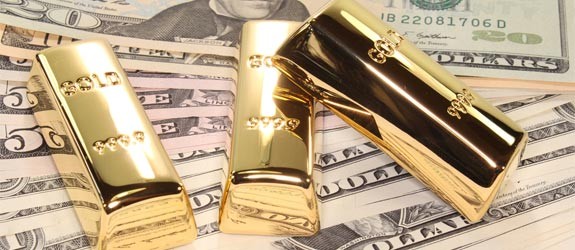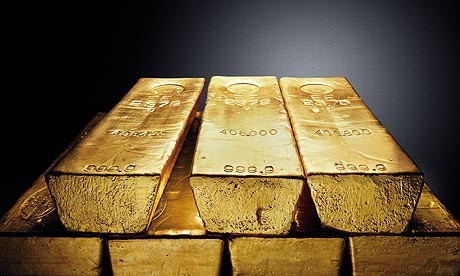Gold Bars Investing
Post on: 8 Май, 2015 No Comment

Educating The People On Gold IRA Investments
Gold Bars Investing
For ages, the yellow metal has captivated mankind, bars of gold have always been sought by all as a sign of solid investment and wealth.
Is this only for the rich?
Let us look at the intrigues of this metal, starting with the technical details of a gold bar:)
What is Gold?
Gold is one of the 118 natural elements that exist in the universe.
Known by the chemical symbol aurum (Au), gold is one of the most valued natural resources on the planet owing to its relative rarity, physical features and utility.
The metal is distinguishable chiefly by its yellow color, malleability and non-rust properties.
Gold bars are refined gold ingots that are cast or minted into units of varying sizes and shapes. These bars, with a purity level of at least 99.5 percent, will usually be inscribed with information relating to its manufacturer and weight. At times, these bars may also be etched with ornamental decorations.
Weight for weight, minted gold bars typically command higher premiums compared to cast ones owing to dearer production costs.
How Much Does a Bar of Gold Weigh?
Contrary to popular belief, gold bars are not all shaped like rounded rectangles. Gold bars, sometimes called ingots. can be manufactured in any shape, size and weight.
However, banks, brokerages and professional traders usually prefer 100-troy-ounce (3.11kg) and 400-troy-ounce (12.44kg) rectangular gold bars owing to storage efficiency. 32.15 troy ounce (1,000 grams) rectangular bars (called kilobars, on account of its weight) are also gaining popularity in the over-the-counter (OTC) and consumer markets due to cheaper trading prices.
In 2007, Japanese conglomerate Mitsubishi manufactured the world’s largest gold bar. Measuring at 45.5cm x 22.5cm x 17cm (17.71” x 8.86” x 6.69”), the bar weighs an incredible 250kg (551.16 lbs.). It remains the largest and most expensive bar to this day.
How Much is a Bar of Gold Worth?
The price is entirely dependent on its weight, multiplied by daily spot rates. For instance, if the spot rate is $1,200 per troy ounce, a kilobar would be worth $38,580 ($1,200 x 32.15).
However, it is important to remember that intra-bank and OTC trades are usually restricted to 32.15, 100 and 400 troy-ounce bars. Non-standard-sized bars are usually only sold to the original manufacturers or other collectors over concerns on purity levels and weight shaving.
The HISTORY OF GOLD
History of Gold and the World Economy: Discounting noble gases, halogens, liquid and poisonous elements, alkaline metals and rare earths, radioactive elements and rare earths, there are only about 49 elements from the periodic table that could conceivably be used as a unit of currency.
If we factor in high smelting temperatures, extraction technology, water and oxide corrosion, and rust, gold suddenly emerges as the undisputed choice for currency – a fact that humanity has realized for at least 2,500 years, as evidenced by gold coins minted during the reign of King Croesus of Lydia circa 560 547 BC.
However, there are indications that gold has been an economic factor, in the form of jewelries and figurines for approximately 6,000 years – possibly earlier.
The Gold Standard
As the volume of local, regional and global trade swelled, gold inevitably became the currency of choice for trade and retail activities. The continued growth of global trade, and the advent of chemical paper pulping technology, facilitated the creation of gold-backed paper currencies.
Over time, this led to the birth of the gold standard, where the values of various global currencies were tied to their gold holdings. After almost two centuries of informal arrangement, the United States officially made the standard into law with the passing of the US Gold Standard Act of 1900.
44 years later, towards the end of World War II, the Bretton Woods agreement was implemented to meet with the rising challenges of international trade and financing and to assist devastated European economies.
The League of Nations, the precursor of today’s United Nations, presided over the implementation of the Bretton Woods system. Bretton Woods consisted mainly of a basket of international currencies pegged to a convertible rate of US$35 per troy ounce of gold.
However, former President Richard Nixon terminated the convertibility arrangement on August 15, 1971, a decision which effectively ended the gold standard and ushered in the era of fiat currencies.
IMF and World Bank
The International Monetary Fund (IMF) was established in 1944 to facilitate, coordinate and manage the Bretton Woods system. However, since the effective end of the Bretton Woods system in 1971, IMF’s responsibility has officially evolved into a global economic watchdog and lending agency.
Funded proportionally by 188 member countries, IMF today oversees the maintenance of global financial uniformity, payment mechanisms and protocol, and cross border transfer systems. The IMF is also the world’s largest lender.
With assets amounting to approximately $750 billion (excluding special drawing rights), the IMF is one of the wealthiest organizations in the world.
Unlike the IMF, the World Bank focuses on economic development of low-income countries and poverty eradication.
It also differs structurally from the IMF, as the World Bank is actually made up of two separate entities the International Bank for Reconstruction and Development (IBRD) and the International Development Association (IDA).
While significantly larger than the IMF in terms of scope and manpower, the World Bank operates on a lower budget. Its disbursements are made in the form of grants and interest free credits.
<<
INVESTING IN GOLD Bars
How to Buy Gold. In the face of the increasingly unsteady fiat currency model, rising global deficit and debt levels, and highly politicized global economic framework, there is a renewed need for a safer, long-term investment channel.
Aside from land, which remains out of reach for most people, gold remains the most viable alternative form of investment.
Its rarity, economic and decorative utilities, and historical growth in real value means it should feature in any medium and long-term investment portfolio.
While gold certificates might be tempting in terms of convenience and speed, you should instead always try to acquire physical gold bars or bullions.

For smaller purchases such as single ounce gold coins, you can acquire them directly from accredited agents of established manufacturers. Keep in mind that the purity level of gold coins will likely be in the lower 90 percent range.
Some of these coins are actually susciptible to scams, which makes investing in gold coins that much riskier than bullion.
For larger purchases or gold bars, approach refineries and gold traders directly to ensure your safety and the quality of your product.
Remember to arrange a storage solution in advance. Unless you are living in a heavily-guarded compound, it is a bad idea to stash gold in your house. Alternatively, you can also hire gold brokers to do all the legwork.
Some would suggest non-tangible gold investments in the form of commodity trading, futures contract or Exchange Traded Funds (ETFs).
These investments could potentially be lucrative, but they are still fiat-based, and could expose your gold to risks of inflationary pressures and financial default.
Where to Buy Gold
For standard or commemorative gold coins :
South African Krugerrand and British Royal Mint Britannia are two of the most reputable names in the business, and their local agents are available in major cities around the world for easier pick-ups or deliveries.
You can also buy gold from online dealers, but make sure to conduct exhaustive due diligence before committing to the purchase or sending any money.
Bars, ingots and bullions:
Some of the largest organizations in the world sell physical gold. Making your purchase from household names such as Credit Suisse, PAMP/MKS and the United States Mint reduces the risk of being ripped off.
Gold Spot Price
Spot prices (or spot rates) are derived from real-time gold trades. Unlike futures, contract or securities prices, spot prices give you an accurate value of current market prices. Adhering to spot prices is crucial not only to day traders, but also to casual investors building a portfolio.
There are numerous online sites which provide instant gold spot prices, including several major online news agencies. Be prepared for variations which may emerge throughout the day as a result of arbitraging.
Another safe way of investing in physical precious metals is through an IRA, in particular, a self directed IRA as it allows you to invest in anything you want to, outside of the usual stock market investments.
In fact, if you want to protect your retirement, you should have some exposure to tangible assets like precious metals, in particular, gold. To get a FREE Gold Investor Kit, Click Here!
To find out which company is reputable enough for you to acquire your precious metals through, read our Gold IRA company Review article.
Well, there you have it, hopefully you would have learnt something valuable about the subject of gold bars. their preciousness and why we all would like to have some.
Disclosure: We are an independently owned organization and committed to imparting value on you, our website visitor. Notwithstanding, the owners of this website may be paid to recommend Regal Assets. The content on this website, including the positive review of Regal Assets, the negative reviews of its competitors, and other information, may not be independent or neutral. The findings, interpretations, and conclusions expressed are entirely those of the authors of each article.














